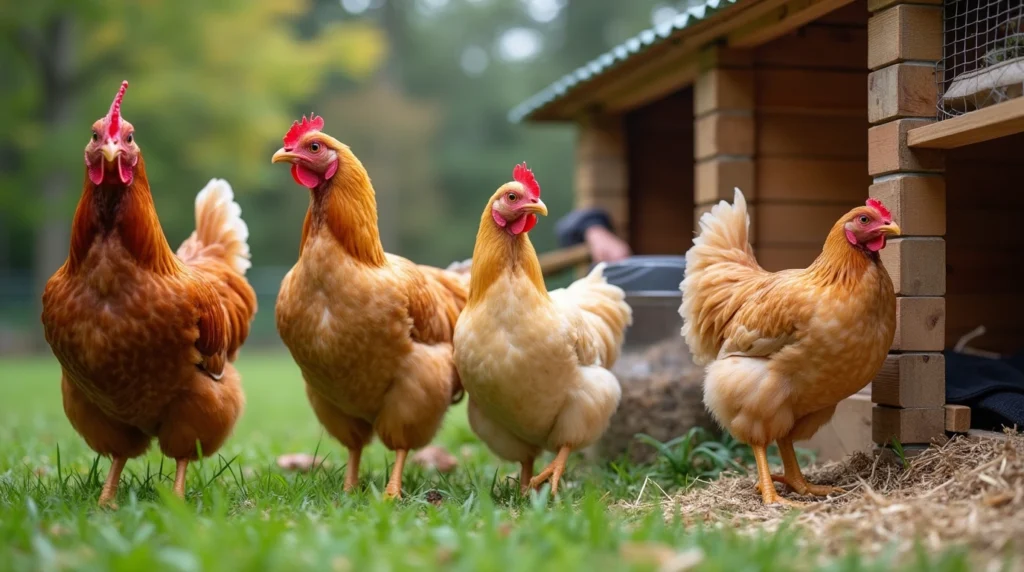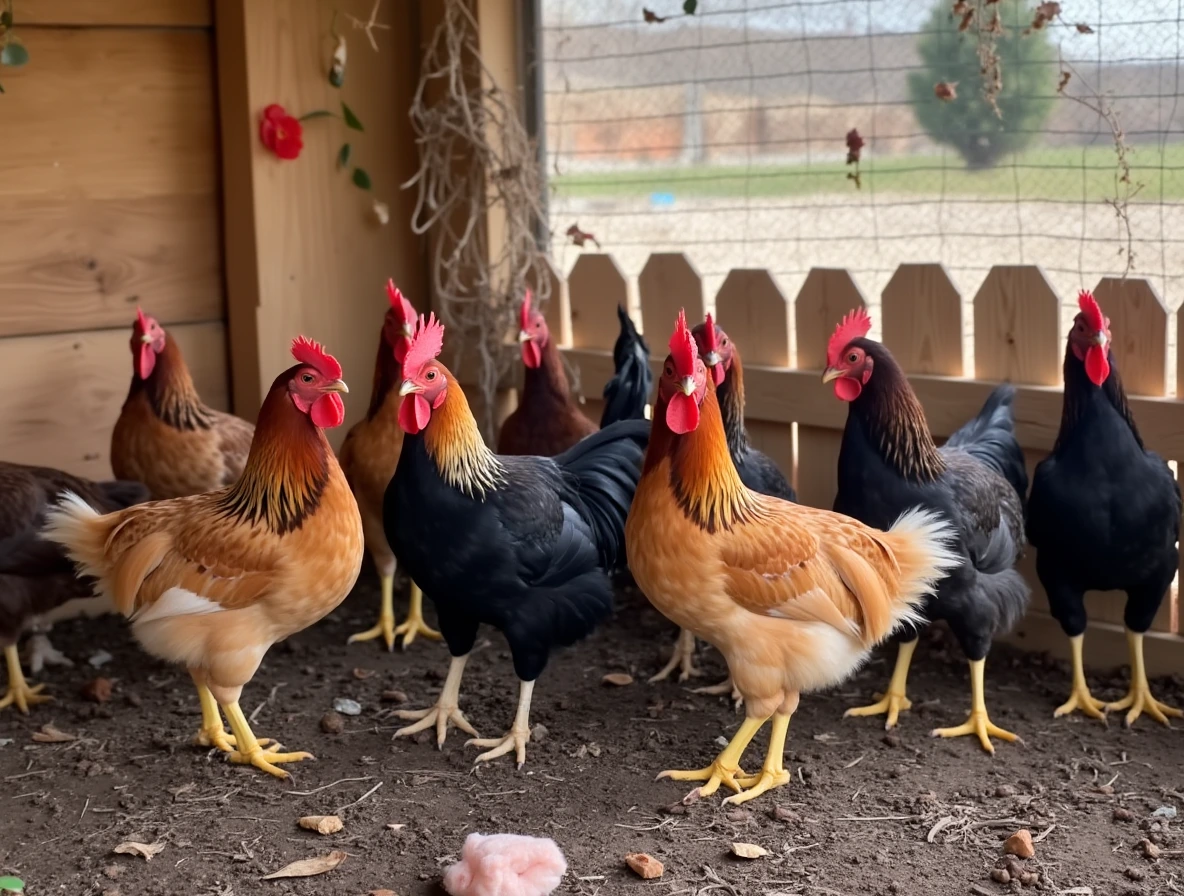Are you considering bringing a touch of farm life into your backyard? If so, you’re not alone! Raising chickens has become increasingly popular among homesteaders and families alike. Not only do chickens provide fresh eggs, but they also contribute to your garden’s health and offer a delightful experience for both kids and adults. In this article, we’ll dive deep into the world of chicken breeds, highlighting their unique traits and benefits and how to choose the right ones for your backyard homestead.
Table of Contents
The Benefits of Raising Chickens
Before we dive into the different breeds, let’s explore why raising chickens is an excellent homesteading activity:
Fresh Eggs: Experience the joy of gathering fresh, organic eggs daily! Homegrown eggs often have richer flavors and vibrant yolks compared to store-bought ones.
Pest Control: Chickens love to forage and will pee and cluck their way through pests in your garden, reducing the need for chemical pesticides.
Nutrient-Rich Fertilizer: Chicken droppings are a great source of nitrogen. With a little composting, you can turn them into a potent fertilizer for your plants.
Educational Experience: Raising chickens can be a wonderful educational opportunity for children, teaching them about responsibility, empathy, and the food production cycle.
Sustainable Living: By raising chickens, you step closer to self-sufficiency, reducing your reliance on grocery stores and their often dubious egg-sourcing practices.
Materials and Tools Needed
To successfully embark on your chicken-raising journey, you’ll need a few essential materials and tools:
Chicken Coop: A sturdy shelter to protect your chickens from predators and extreme weather conditions.
Nesting Boxes: Comfortable spaces where hens can lay their eggs.
Feeders and Waterers: Essential for providing your chickens with a balanced diet and hydration.
Bedding Material: Straw, hay, or wood shavings keep the coop clean and comfy.
Fencing: Strong and secure fencing to keep your chickens safe while allowing them space to roam.
Chicken Feed: A good quality, certified organic feed formulates the foundation of your flock’s diet.
First Aid Kit for Chickens: Just in case, it’s wise to have some basic veterinary supplies on hand.
Step-by-Step Instructions for Choosing Your Chicken Breeds
Choosing the right chicken breeds for your backyard is crucial for ensuring your flock thrives. Here’s a straightforward guide to help you make the right decision:
Step 1: Assess Your Space
- Backyard Size: Understand how much space you have available. Chickens need about 4 square feet inside their coop and 10 square feet for outdoor roaming per bird.
Step 2: Determine Your Goals
Egg Production: Are you focusing primarily on egg production, or are you interested in dual-purpose breeds that provide meat as well?
Temperament: If you have children or pets, you may want docile breeds that are friendly and sociable.
Step 3: Explore Breed Characteristics
Research various breeds to find those that fit your needs. Here are some popular choices based on traits:
High Egg Production:
- Leghorn: Known for prolific laying (up to 300 eggs a year).
- Rhode Island Red: Hardy and excellent producers, known for their good temperament.
Beauty and Personality:
- Silkie: Known for their fluffy feathers and friendly nature, great for families.
- Polish: Features a unique feather crest and is typically curious and calm.
Cold Hardiness:
- Wyandotte: Excellent in colder climates, with good egg-laying capabilities.
- Australorp: Resilient breed with good heat and cold tolerance.
Step 4: Purchase Your Chickens
- Find a reputable hatchery or local breeder. Always ask for health records and ensure they practice good biosecurity.
Step 5: Introduce Them to Their New Home
- Allow your chickens time to acclimate to their new environment. Ensure their coop and run are ready with food, water, and bedding upon their arrival.
Common Mistakes to Avoid

Starting your chicken-raising journey isn’t without its pitfalls. Here are some common mistakes to steer clear of:
Overcrowding: Offering too little space can lead to stress and pecking issues among chickens. Always adhere to space guidelines.
Ignoring Biosecurity: Maintain good hygiene and regularly clean the coop to prevent disease transmission.
Using Poor Quality Feed: Invest in high-quality feed to ensure your chickens receive the necessary nutrition for optimal health.
Pro Tips from Seasoned Gardeners
Here are some expert tips to help you on your chicken-raising adventure:
Integrate Chickens into Your Garden: Let them free-range in your garden after you harvest. They’ll till the soil, and their droppings will naturally fertilize your plants.
Rotate Their Run: Regularly moving the chicken coop allows you to avoid overgrazing and helps maintain healthy grass.
Create a Dust Bath: Chickens love to dust themselves! A simple bath of sand mixed with diatomaceous earth aids in keeping pests at bay.
Seasonal or Climate-Specific Considerations
Understanding your climate is essential for keeping chickens healthy and productive.
Hot Climates: Offer shade in the run and ensure they have ample water. Heat stress can affect egg production.
Cold Climates: Insulate your coop and ensure water doesn’t freeze. Chickens can thrive in winter but may require extra care.
Natural Pest or Disease Prevention Strategies
Maintaining the health of your flock naturally is achievable with these strategies:
Maintain Cleanliness: Regularly clean the coop and surrounding areas to deter pests.
Diatomaceous Earth: Sprinkle it in the coop and nesting boxes to control mites and lice.
Herbs: Plant herbs such as oregano and lavender around your coop. Chickens naturally peck at them, which can help deter pests.
Companion Planting and Soil Health Suggestions
If you’re gardening alongside your flock, consider these tips for companion planting:
Herbs and Chickens: Many herbs, like rosemary and thyme, repel pests and are safe for chickens to ingest.
Plant Calendula and Nasturtium: These flowers not only beautify your garden but can also help deter harmful insects.
Rotate Your Flock: To improve soil health, rotate chickens to different garden sections to allow the soil to regenerate.
Harvesting and Post-Harvest Care
After months of caring for your flock, it’s time to enjoy the fruits of your labor when harvesting eggs.
Daily Collection: Collect eggs daily to prevent them from getting dirty or being pecked by other hens.
Cleaning Eggs: If eggs get dirty, gently clean them with a dry cloth. Wash only when necessary to preserve the protective cuticle.
Storage: Store eggs in a cool, dry place. Homemade eggs can last up to 3-5 weeks when stored properly!
FAQs
1. How many chickens should I start with?
It’s best to start with at least 3-6 chickens, as they are social creatures and thrive in flocks.
2. Do chickens need a rooster to lay eggs?
No, hens will lay eggs without a rooster. However, a rooster is needed if you wish to hatch chicks.
3. How can I tell if my chickens are sick?
Look for signs such as lethargy, decreased egg production, or changes in eating and drinking habits. Regular health checks are advisable.
4. Can chickens be left alone for a week?
It’s best to have someone check on them every few days, as they require fresh food and water, and their coop must be maintained.
5. How can I keep my chickens safe from predators?
Secure your coop with strong locks and sturdy construction, and ensure that their run is covered to protect them from aerial predators.
Conclusion
Taking on the rewarding task of raising chickens is a decision that can enrich your life, enhance your homestead, and provide fresh, delicious eggs for your family. With the right chicken breeds selection and attentive care, you can create a harmonious relationship between your flock and your garden.
So, why wait? Take the plunge, gather your materials, and begin your journey into the joyful world of backyard chickens. It’s an adventure you won’t regret, filled with the sound of clucking, the thrill of egg collection, and a dash of farm-fresh fun! Visit your local hatchery or read more about breeds that fit your lifestyle today! 🌼🐔
